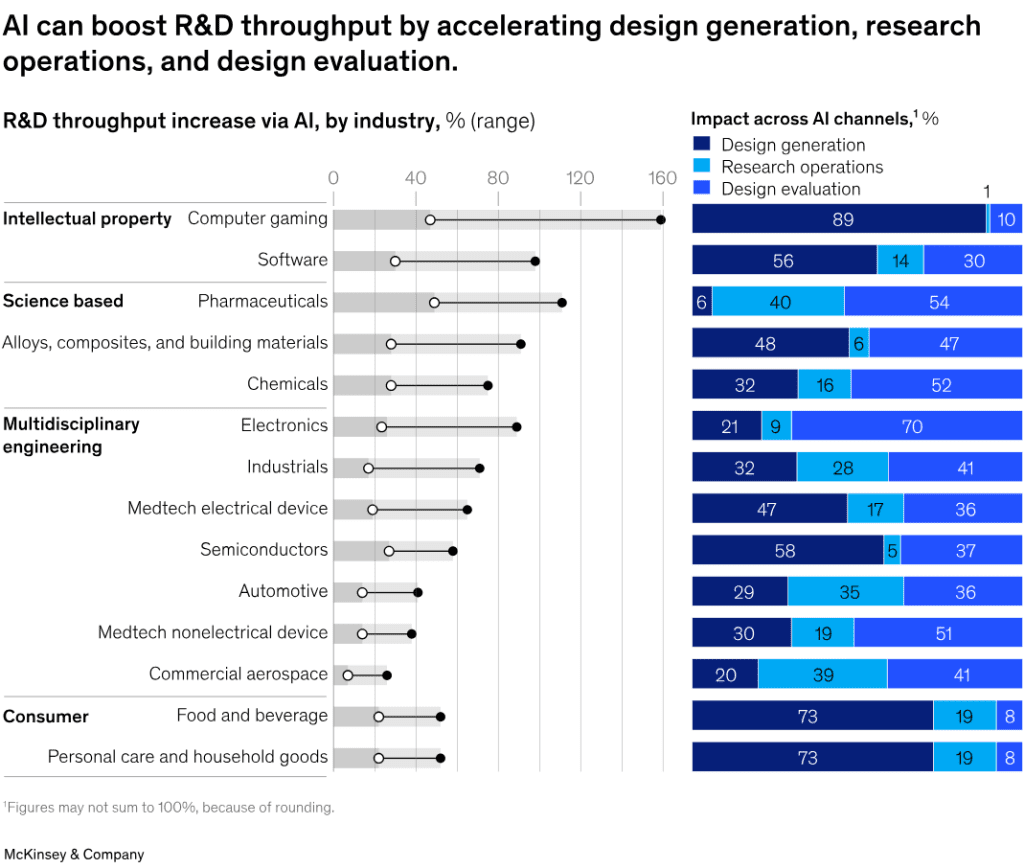Artificial Intelligence
Future Telecoms
Quantum
Future telecoms 2025 to 2026: from faster networks to thinking infrastructure
Reading time: 7 mins
From drug discovery to materials science, AI is streamlining R&D and reshaping the infrastructure and skills needed to support it
Companies using AI in R&D are seeing faster experimentation, more efficient design processes, and new opportunities to shorten time-to-market, according to research from McKinsey. In sectors from pharmaceuticals to materials science, AI is increasingly acting as a catalyst, recharging innovation pipelines that often stall under the weight of cost and complexity.
This shift is about productivity as much as discovery. McKinsey points to the potential for AI to strip out repetitive early-stage tasks, freeing researchers to focus on higher-value questions. In drug development, that could mean modelling new compounds in days rather than months. In energy or materials, it could mean simulating thousands of options before a single prototype is built. The cumulative effect is that R&D delivers results faster, at lower cost.

Infrastructure is critical to realising that potential. The UK’s launch of Isambard-AI recently is one example, described by Science Secretary Peter Kyle as “the most powerful computer system in the country.” By giving researchers and entrepreneurs access to advanced compute, the project aligns directly with McKinsey’s argument that AI can recharge R&D, and as a result, countries and companies that invest in the right tools will be the first to see results.
The ripple effects are already being felt. As AlbionVC partner Dave Grimm told Foresight, AI workloads are pushing data centres to their limits, creating demand for photonics chips that could “represent the next leap forward for the IT industry.” AI-driven R&D isn’t just speeding up science, it’s also reshaping the infrastructure and investment landscape needed to support it.The UK government also recently spotlighted 10 AI breakthroughs set to cut bills and heat homes more efficiently, from smarter grid management to predictive maintenance. It’s evidence perhaps that the gains McKinsey identifies are already filtering into real-world solutions.

Working as a technology journalist and writer since 1989, Marc has written for a wide range of titles on technology, business, education, politics and sustainability, with work appearing in The Guardian, The Register, New Statesman, Computer Weekly and many more.
Quantum
Reading time: 10 mins
Quantum
Reading time: 10 mins
Quantum
Reading time: 11 mins
Robotics
Reading time: 1 mins
Quantum
Reading time: 3 mins